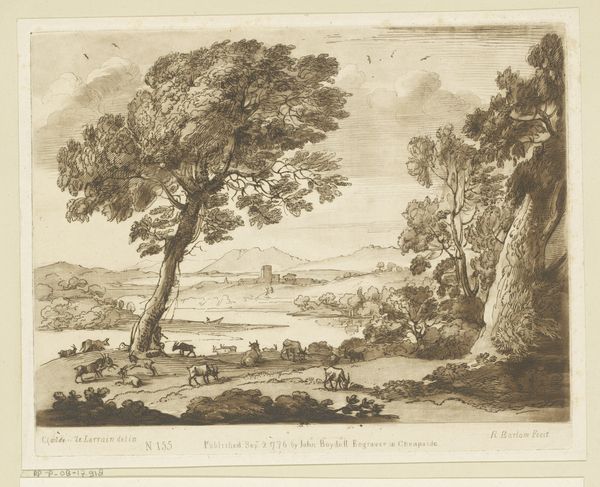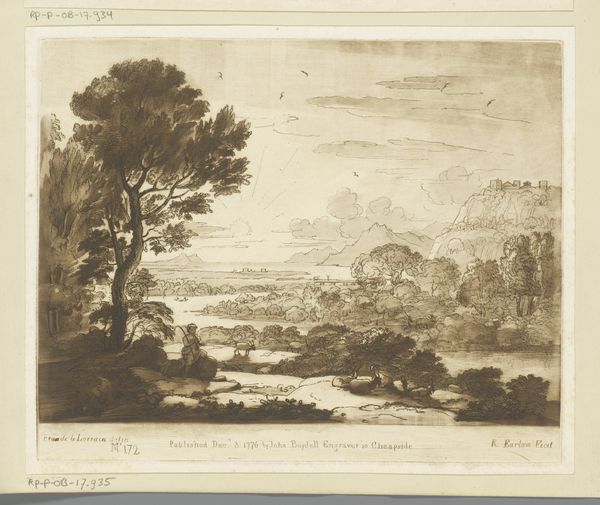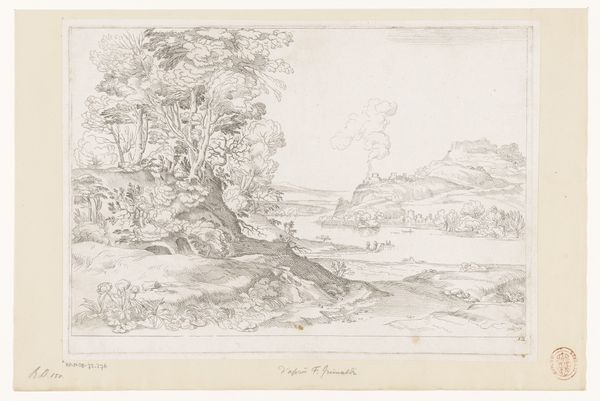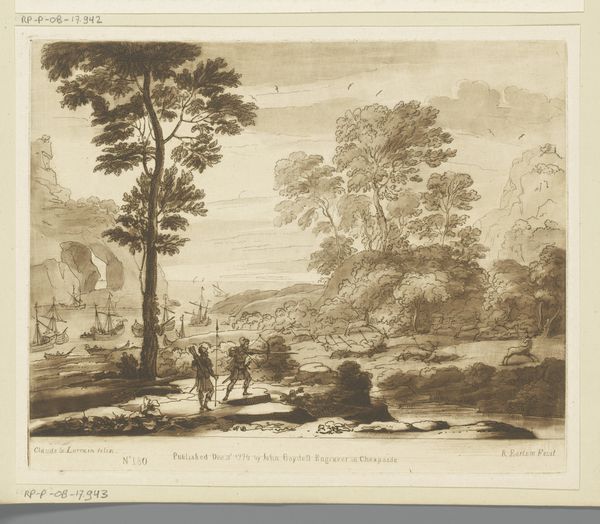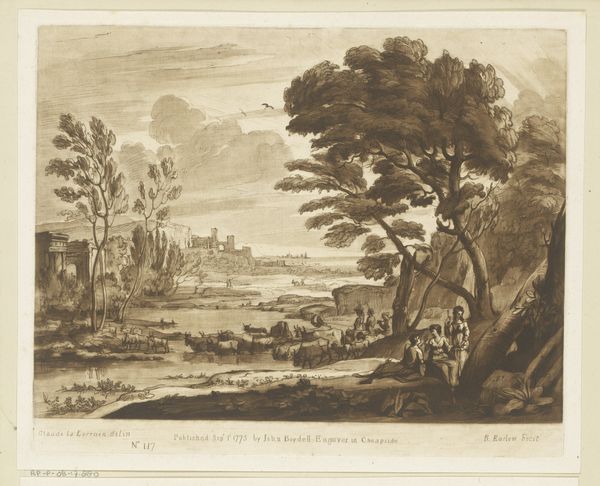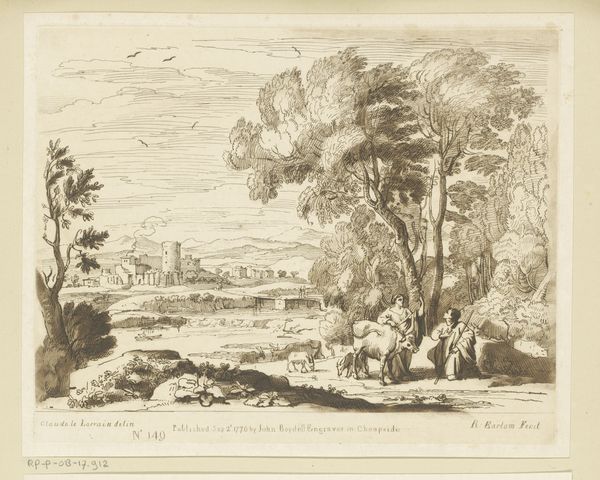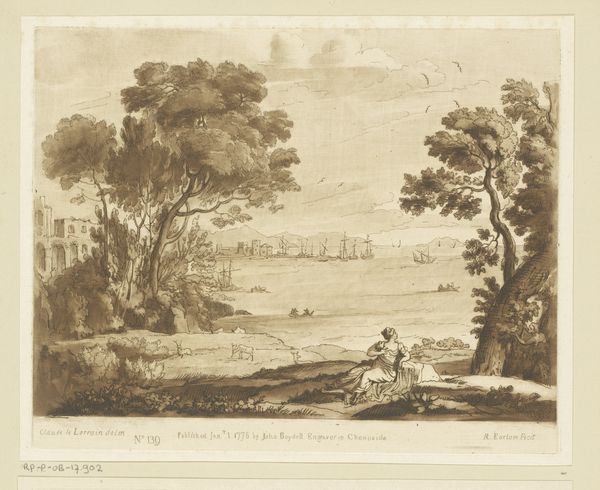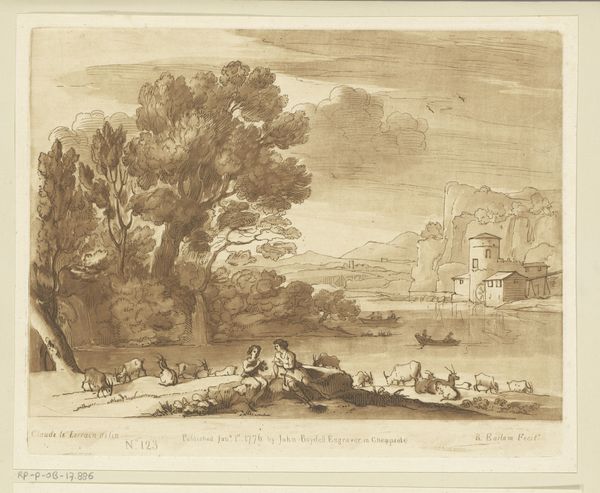
Landschap met engel en rust tijdens de vlucht naar Egypte Possibly 1777
0:00
0:00
richardearlom
Rijksmuseum
Dimensions: height 208 mm, width 260 mm
Copyright: Rijks Museum: Open Domain
Curator: Right now we are standing in front of a print entitled "Landscape with Angel and Rest on the Flight into Egypt." The piece is credited to Richard Earlom, dating back to around 1777. It's an etching, currently held here at the Rijksmuseum. Editor: Ah, it's whispering a secret story, isn't it? In monochromatic browns, like aged parchment... feels very intimate, almost fragile despite the wide landscape depicted. The scene almost feels lifted from a dreamscape, doesn't it? Curator: Indeed, it seems to capture a transient, reflective pause. What I find particularly intriguing is the act of recreating a painting by Claude Lorrain, using the mechanical process of etching. It's about access to artistry, the distribution of visuals. The networks in place at the time – publishers, engravers – they become crucial for understanding the image's circulation and its social impact. Editor: That tension between fine art and craft. A beautiful painting reproduced in a way that lets more people experience its loveliness, I like that tension, that very idea of wider consumption of beauty. The landscape itself is idyllic – a classic composition, framed with dark, towering trees drawing my eye towards the calm river with the delicate bridge in the distance. It softens into a kind of hopeful haze near the mountains. It feels divinely protected, especially with that angel watching over Mary, Joseph and Jesus. Curator: I agree completely! Also note Earlom’s contribution to the printmaking. How labor-intensive etching is and how this particular piece demonstrates a high degree of skill in emulating brushstrokes, tonality through layers of etching to mimic the feel of the original. Editor: You know, as much as the religious aspect appeals, this feels so profoundly about rest itself... a moment stolen in time, under the gaze of an angel. I appreciate its simplicity. Curator: Absolutely, I love your take! We have a Baroque vision of a story, filtered through the Romantic era, transferred to a plate, and made accessible. It’s a complex dance of artistic creation and socio-economic production. Editor: It truly makes me wonder about all the hidden labors behind what appears so ethereal. Thank you, that changed my perspective profoundly!
Comments
No comments
Be the first to comment and join the conversation on the ultimate creative platform.
